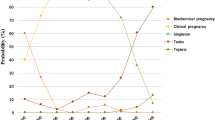Abstract
This study investigated the possible use of CCR1 mRNA measurement in peripheral blood leukocytes in combination with measurements of monocyte chemotactic protein-1 (MCP-1) and CA125 protein in serum as a diagnostic test for endometriosis. The expression of CCR1 mRNA in peripheral blood leukocytes was measured by quantitative real-time polymerase chain reaction. MCP-1 and CA125 levels in serum were determined by ELISA and ECLIA.The ratio of CCR1/HPRT mRNA in peripheral blood of patients with endometriosis and adenomyosis was significantly elevated compared with women without endometriosis. Additionally, serum levels of MCP-1 and CA125 were significantly higher in patients with endometriosis. This method showed a sensitivity of 92.2%, a specificity of 81.6%, a negative predictive value of 83.3%, a positive predictive value of 92.3%, a likelihood ratio of a positive test result of 5.017, and a likelihood ratio of a negative test result of 0.096 to predict the presence or absence of endometriosis. The results imply the potential use of CCR1 mRNA, MCP-1, and CA125 protein measurements for the diagnosis or exclusion of endometriosis.
Similar content being viewed by others
References
Velebil P,Wingo PA, Xia Z, Wilcox LS, Peterson HB. Rate of hospitalization for gynecologic disorders among reproductive-age women in the United States. Obstet Gynecol. 1995;86: 764–769.
Eskenazi B, Warner ML. Epidemiology of endometriosis. Obstet Gynecol Clin North Am. 1997;24:235–258.
Mahmood TA, Templeton A. Prevalence and genesis of endometriosis. Hum Reprod. 1991;6:544–549.
Laufer MR, Goitein L, Bush M, Cramer DW, Emans SJ. Prevalence of endometriosis in adolescent girls with chronic pelvic pain not responding to conventional therapy. J Pediatr Adolesc Gynecol. 1997;10:199–202.
D’Hooghe TM, Debrock S, Hill JA, Meuleman C. Endometriosis and subfertility: is the relationship resolved? Semin Reprod Med. 2003;21:243–254.
Koninckx PR, Meuleman C, Demeyere S, Lessafre E, Cornillie FJ. Suggestive evidence that pelvic endometriosis is a progressive disease, whereas deeply infiltrating endometriosis is associated with pelvic pain. Fertil Steril. 191;55:759–765.
Corson SL, Cheng A, Gutmann JN. Laparoscopy in the “normal” infertile patient: a question revisited. J Am Assoc Gynecol Laparosc. 2000;7:317–324.
Balasch J, Creus M, Fabregues F, et al. Visible and non-visible endometriosis at laparoscopy in fertile and infertile women and in patients with chronic pelvic pain: a prospective study. Hum Reprod. 1996;11:387–391.
Rossi D, Zoltnik A. The biology of chemokines and their receptors. Annu Rev Immunol. 2000;18:217–242.
Hornung D, Bentzien F, Wallwiener D, Kiesel L, Taylor RN. Chemokine bioactivity of RANTES in endometriotic and normal endometrial stromal cells and peritoneal fluid. Mol Hum Reprod. 2001;7:163–168.
Rollins BJ, Walz A, Baggiolini M. Recombinant human MCP-1/JE induces chemotaxis, calcium flux, and the respiratory burst in human monocytes. Blood. 1991;78:1112–1116.
Arici A, Oral E, Attar E, Tazuke SI, Olive DL. Monocyte chemotactic protein-1 concentration in peritoneal fluid in patients with endometriosis and its modulation in human mesothelial cells. Fertil Steril. 1997;67:1065–1072.
Mol BW, Bayram N, Lijmer JG, Wiegerinck MA, Bongers MY, van der Veen F, Bossuyt PM.The performance of CA125 measurement in the detection of endometriosis: a meta-analysis. Fertil Steril. 1998;70:1101–1108.
Agic A, Xu H, Rehbein M,Wolfler MM, Ebert AD, Hornung D. CCR1 mRNA expression in peripheral blood as a diagnostic test for endometriosis. Fertil Steril. 2007;87:982–984.
Horuk R. Molecular properties of the chemokine receptor family. Trends Pharmacol Sci. 1994;15:159–165.
Wieser F, Dogan S, Klingel K, Diedrich K, Taylor RN, Hornung D. Expression and regulation of CCR1 in peritoneal macrophages from women with and without endometriosis. Fertil Steril. 2005;83:1878–1881.
Akoum A, Lemay A, McColl SR, Paradis I, Maheux R. Increased monocyte chemotactic protein-1 level and activity in the peripheral blood of women with endometriosis. Le Group d’Investigation en Gynécologie. Am J Obstet Gynecol. 1996;175:1620–1625.
Pizzo A, Salmeri FM, Ardita FV, Sofo V,Tripepi M, Marsico S. Behaviour of cytokine levels in serum and peritoneal fluid of women with endometriosis. Gynecol Obstet Invest. 2002;54: 82–87.
Othman Eel-D, Hornung D, Salem HT, Khalifa EA, El-Metwally TH, Al-Hendy A. Serum cytokines as biomarkers for nonsurgical prediction of endometriosis. Eur J Obstet Gynecol Reprod Biol. 2008;137:240–246.
Somigliana E,Vigano P,Tirelli AS. Use of the concomitant serum dosage of CA125, CA19-9 and interleukin-6 to detect the presence of endometriosis. Results from a series of reproduction age women undergoing laparoscopic surgery for benign gynaecological conditions. Hum Reprod. 2004;19:1871–1876.
Somigliana E,Vigano P, Candiani M, Felicetta I, Di Blasio AM,Vignali M. Use of serum-soluble intercellular adhesion molecule-1 as a new marker of endometriosis. Fertil Steril 2002;5:1028–1031.
Gagne D, Rivard M, Page M, et al. Development of a non-surgical diagnostic tool for endometriosis based on the detection of endometrial leukocyte subsets and serum CA125 levels. Fertil Steril. 2003;80:876–885.
Harada T, Kubota T, Aso T. Usefulness of CA19-9 versus CA125 for the diagnosis of endometriosis. Fertil Steril. 2002; 78:733–739.
Vigano P, Somigliana E, Matrone R, et al. Serum leptin concentrations in endometriosis. J Clin Endocrinol Metab 2000; 87:1085–1087.
Flores I, Rivera E, Mousses S, Chen Y, Rozenblum E. Identification of molecular markers for endometriosis in blood lymphocytes by using deoxyribonucleic acid microarrays. Fertil Steril. 2006;85:1676–1683.
Hever A, Roth RB, Hevezi P, et al. Human endometriosis is associated with plasma cells and overexpression of B lymphocyte stimulator. Proc Natl Acad Sci U S A. 2007;104: 12451–12456.
Husby GK, Haugen RS, Moen MH. Diagnostic delay in women with pain and endometriosis. Acta Obstet Gynecol Scand. 2003;82:649–653.
Author information
Authors and Affiliations
Corresponding author
Rights and permissions
About this article
Cite this article
Agic, A., Djalali, S., Wolfler, M.M. et al. Combination of CCR1 mRNA, MCP1, and CA125 Measurements in Peripheral Blood as a Diagnostic Test for Endometriosis. Reprod. Sci. 15, 906–911 (2008). https://doi.org/10.1177/1933719108318598
Published:
Issue Date:
DOI: https://doi.org/10.1177/1933719108318598




